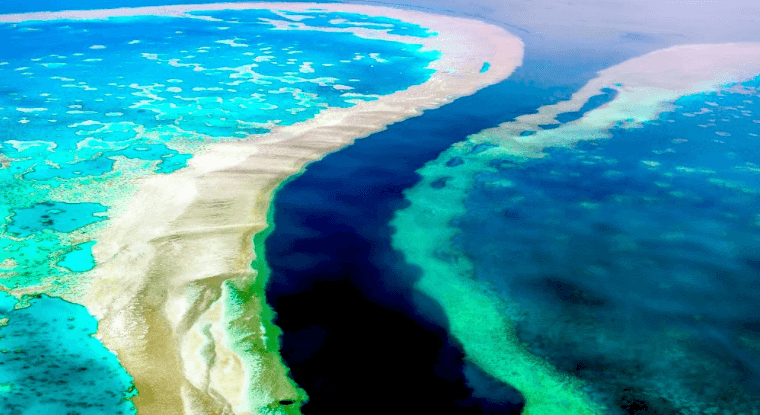
The Best Time to Visit Great Barrier Reef
For an ultimate experience, what is the best time to visit Great Barrier Reef? 🌊 Because timing is everything, this guide breaks down the best months (May-October), ideal weather, and visibility tips to dodge jellyfish season. Explore expert insights on seasons, marine life, and why October’s crystal-clear waters might just steal your snorkel. 🐢
Article Takeaways
In a few words, the best time to visit Great Barrier Reef is from May to October. During this winter/dry season, the sky is clear, temperatures are pleasant, and with minimal rain the underwater visibility is ideal for snorkeling and diving.
To get the most updated or personalized information, here are the contact details of Great Barrier Reef Marine Park Authority (GBRMPA):
Great Barrier Reef Marine Park Authority (GBRMPA) website: https://www2.gbrmpa.gov.au/ / + 61 7 4750 0700 (office) or + 61 7 4750 0700 (emergency contact) / email: info@gbrmpa.gov.au
Table of contents
- The Perfect Time to Experience the Great Barrier Reef 🐠
- Amazing Marine Life: A Seasonal Guide to the Great Barrier Reef 🐢
- Weather Patterns and Seasonal Considerations for Your Barrier Reef Adventure 🌦️
- Tourist Crowds and Pricing Considerations Across the Barrier Reef Calendar 💰
- Planning Your Great Barrier Reef Adventure: Month-by-Month Breakdown 🗓️
The Perfect Time to Experience the Great Barrier Reef 🐠
The Dry Season Sweet Spot for Reef Exploration
The dry season from May to October is ideal for visiting the Great Barrier Reef, a destination listed in our top ecotourism examples article 🌊. During these months, waters are clear, temperatures are pleasant (22-27°C), and stinger risks are minimal. This period also coincides with whale season (June to October) and manta ray sightings (April to October).
Weather during the dry season is characterized by warm days, cool nights, and minimal rainfall. Average temperatures range from 22°C to 27°C, creating perfect conditions for reef exploration. Rainfall averages 27mm in August, ensuring excellent underwater visibility. These conditions contribute to the reef’s reputation as one of the seven natural wonders of the world.
Crystal Clear Waters and Perfect Visibility
Crystal clear waters during the dry season provide exceptional visibility, often reaching 25-35 meters. July and September are particularly notable for their « glass out » conditions on outer reefs. The clarity of the water enhances the experience of diving and snorkeling, making it easier to spot marine life and appreciate the vibrant coral formations.
| Month | Average Visibility (meters) | Visibility Conditions |
|---|---|---|
| April | 10-15 | Transition period with improving clarity |
| May | 15-25 | Dry season begins, excellent visibility |
| June | 15-30 | Peak dry season, optimal conditions |
| July | 20-35 | Low rainfall, crystal clear waters |
| August | 15-25 | Consistently high visibility |
| September | 25-45 | « Glass out » conditions on outer reefs |
| October | 10-20 | Shoulder season with decreasing clarity |
| November | 8-15 | Start of stinger season, moderate visibility |
| December | 5-10 | Coral spawning period, reduced clarity |
| January | 5-10 | Wet season peak, variable conditions |
| February | 5-15 | Coastal rains affect inner reefs |
| March | 8-12 | Shoulder season transition period |
Water temperature during dry season remains stable between 26°C and 28°C, ideal for coral health and marine life activity. This stability supports diverse ecosystems, making it a prime time for observing marine species. Visibility ranges from 20 to 25 meters from May to September offering exceptional clarity on outer reefs.
Escaping the Stinger Season
The risk of encountering dangerous marine stingers is significantly reduced during the dry season. From November to May, these creatures are more prevalent in the waters surrounding the Great Barrier Reef. Visiting between May and October ensures a safer experience and avoid swimmers and divers to meet these 3 « iconic » species:
- Box Jellyfish (Chironex fleckeri): World’s most venomous species with 70+ human fatalities recorded in Australia over the last century
- Irukandji Jellyfish (Carukia barnesi): Small but deadly creature causing Irukandji syndrome with severe pain and potential fatality
- Lion’s Mane Jellyfish (Cyanea capillata): Largest species with tentacles exceeding 30 meters that can cause cardiac complications
During the dry season, visitors can enjoy the freedom of swimming without the need for protective gear. Stinger nets and suits are commonly used during the wet season, but they can reduce the overall experience. The dry season eliminates these concerns, allowing for a more natural interaction with the reef’s ecosystem.
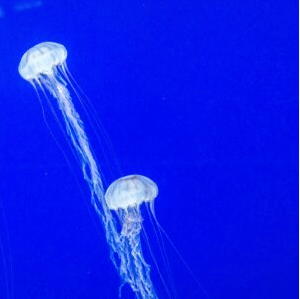
Weather Patterns and Reef Accessibility
Weather plays a significant role in the accessibility of the Great Barrier Reef. During the dry season, weather conditions are more predictable, with calm seas and clear skies. This makes boat trips to the outer reefs more reliable and island visits more enjoyable. In contrast, the wet season can bring unpredictable weather, affecting travel plans and reef accessibility.
The cyclone season, which runs from November to April, can impact travel plans to the Great Barrier Reef. While cyclones are not annual occurrences, the risk is present, especially between January and March. Travelers should be aware of potential disruptions and have contingency plans in place. Historical events like Cyclone Debbie in 2017 demonstrate the potential impact on the region.
Amazing Marine Life: A Seasonal Guide to the Great Barrier Reef 🐢
Wildlife Encounters Throughout the Year
Even if the best time to visit Great Barrier Reef is know to be from June to October, the wildlife follows its own schedule. Humpback whales migrate through the reef during dry season, but green turtles nest from November to January, while clownfish are thriving year-round. The reef hosts 1500+ fish species and 160+ shark types.
Coral spawning in November creates a natural spectacle. Triggered by water temperature and lunar cycles, it’s a feast for marine life. Visibility dips during this period, but divers witness mass reproduction. Some tours prioritize this event despite challenges.
Whale Watching Season in Queensland Waters
Whale season peaks June–September with 25,000+ humpbacks. Humpback whales migrate from subantarctic waters to breed, passing the reef June–September. Dwarf minkes gather June–July. Hervey Bay and Cairns offer prime viewing. Specialized tours guarantee sightings or free returns, with 90% success rates.
Multi-day tours from Cairns combine diving with minke whale swims. Hervey Bay’s calm waters host 35,000+ humpbacks yearly. Hydrophone-equipped boats let you hear their songs and some charters offer sunset cruises for twilight encounters.
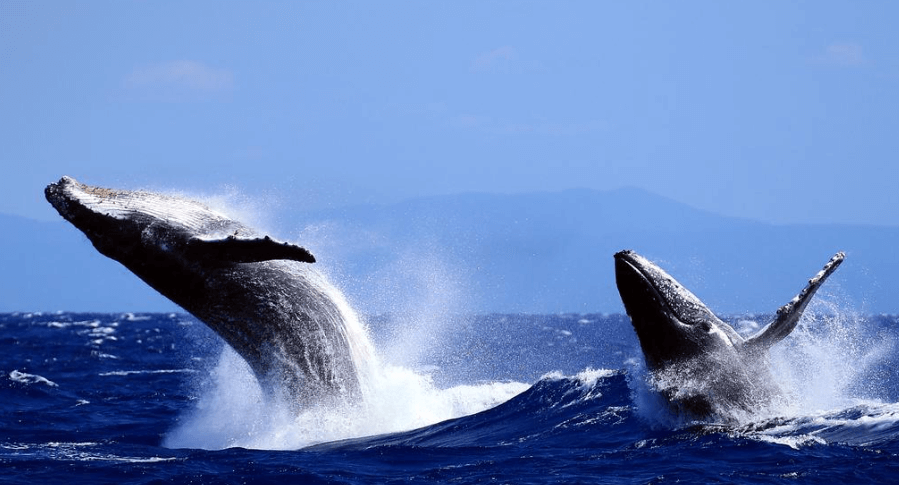
Turtle Nesting and Hatching Seasons
Green and hawksbill turtles nest November–February on Raine and Heron Islands 🐢. Raine Island hosts 5,734 green turtles nightly at peak. Conservation efforts include nest shading and water cooling, which is absolutely necessary as only 0.1% of hatchlings survive to adulthood.
Guided night tours on Heron Island prioritize turtle welfare. To avoid disturbance, visitors must avoid flashlights and maintain distance. Also, be aware that the law protects turtles, with penalties up to 150,000 Dollars fines in case of misbehaviour.
Manta Rays and Other Seasonal Marine Visitors
Manta rays gather May–October at Lady Elliot Island, but Osprey Reef draws sharks year-round. Over 160 shark species roam the reef, including tiger and whitetip sharks. Seasonal aggregations include humpback whales and turtle hatchlings, this is why it is important to pick the best time to visit Great Barrier Reef, according to which species you are seeking to observe.
Lady Elliot Island’s “Mantaray Bay” sees 7m-wide rays. Agincourt Reef hosts reef sharks and turtles. Six global sea turtle species thrive here. Snorkelers in June–July might spot curious minkes or whale pods.
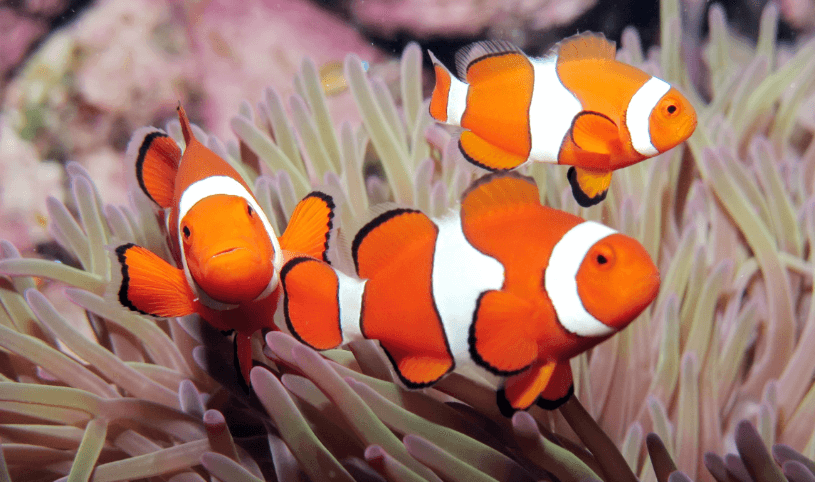
Weather Patterns and Seasonal Considerations for Your Barrier Reef Adventure 🌦️
Understanding the Wet and Dry Seasons
The Great Barrier Reef experiences two main seasons: dry (May–October) with stable weather and wet (November–April) marked by rain and stinger season. Dry season brings 22-27°C temperatures, while wet season averages 29-32°C with 2,010mm annual rainfall. Coral spawning peaks in November during the wet season, while whales migrate through during the dry season. 🐋
| Month | Morning Temp (°C) | Afternoon Temp (°C) | Rainfall (mm) |
|---|---|---|---|
| January | 24 | 31 | 340 |
| February | 24 | 31 | 310 |
| March | 23 | 30 | 270 |
| April | 21 | 28 | 140 |
| May | 19 | 26 | 78 |
| June | 18 | 24 | 40 |
| July | 17 | 24 | 36 |
| August | 18 | 25 | 32 |
| September | 20 | 27 | 48 |
| October | 22 | 29 | 80 |
| November | 23 | 30 | 180 |
| December | 24 | 31 | 300 |
Climate change intensifies weather extremes, increasing coral bleaching and cyclone strength. The reef faced four major bleaching events in seven years, with 93% of reefs affected in 2016. Warmer waters now sustain category 3+ cyclones like Debbie (2017), which battered the Whitsundays. Visitors must adapt to shifting seasonal norms. 🌊
Pros and Cons of the Shoulder Seasons
Out of the best time to visit the Great Barrier Reef, April–May and October–November are also interesting options. These « shoulder seasons » offer 30-40% lower costs with 15-20m visibility. These months avoid peak crowds while maintaining favorable conditions for reef exploration . However, keep in mind that November’s rising stinger risk and April’s late cyclone season add complications. Here are the 4 important things you should consider if you’d like to explore Great Barrier Reef during shoulder seasons:
- Affordable prices: Shoulder seasons (April-May & October-November): Offer 30-40% lower prices compared to peak season
- Great Barrier Reef accessibility: Fewer crowds while maintaining 15-20 meter underwater visibility
- Wet season transition: Potential for late stinger activity in April and early cyclone risks in November
- Weather patterns: More variable conditions with occasional rain showers affecting boat tours
Weather reliability varies across shoulder periods. October offers calm waters perfect for underwater photography, while November’s Irukandji jellyfish limit swimming. Rainfall can reach 300mm/month during wetter transitions, affecting inner reef accessibility. Plan carefully to balance cost and conditions. 🌧️
Tourist Crowds and Pricing Considerations Across the Barrier Reef Calendar 💰
Analysis of Tourist Patterns Throughout the Year
June to August brings the highest tourist numbers because school holidays and perfect weather create busy periods. During this period, you’ll need to book whale swims and outer reef dives early to secure spots. If you like quieter experience, April and November offers a more peaceful experience. 🐠
Peak season runs June-September with ideal conditions. July-August sees the most visitors due to clear waters and whale season. Shoulder months like May and October offer fewer crowds while maintaining good visibility. Plan accordingly! 🌊
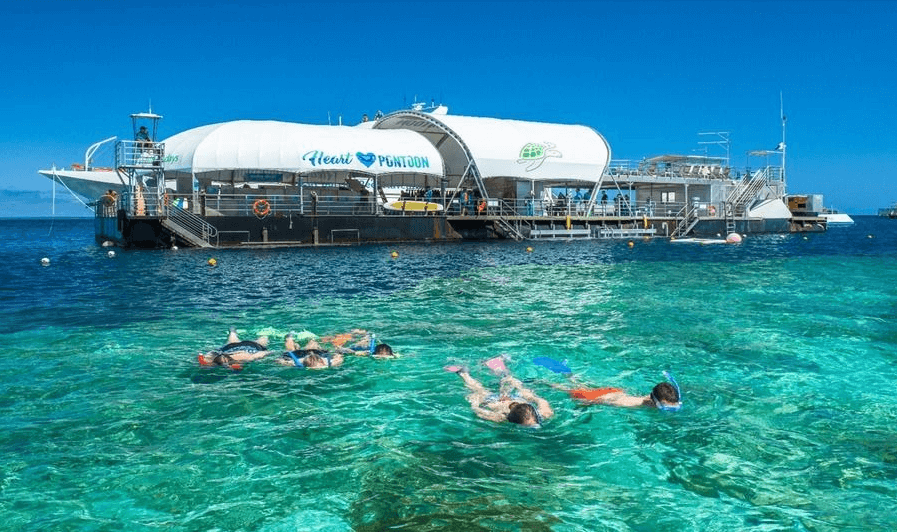
Overview of Seasonal Pricing Variations
Accommodation prices in Cairns nearly double during peak season (from $114 to $213 average), and tours start at $81 for half-day trips. To visit between January-March will offer 30-40% lower costs with acceptable conditions. 🏄
Peak season costs 87% more for hotels in Cairns. Whale swims and helicopter tours stay popular despite higher prices. Shoulder seasons provide better value with 15-20m visibility and fewer crowds. Balance budget and experience! 💸
Planning Your Great Barrier Reef Adventure: Summary and Month-by-Month Breakdown 🗓️
Peak Season Experience (June to August)
June to August offer ideal reef conditions 🌊. Water temperatures range from 26°C to 28°C with visibility up to 35 meters. These months align with whale season, where 25,000+ humpbacks pass through. Book tours early as 70% of outer reef spots fill by January. 🐋
July’s low rainfall (36mm average) ensures calm seas. 80% of divers rate visibility as “exceptional” during this period. Temperatures stay comfortable at 17-24°C air and 28°C water. This combination creates perfect conditions for underwater photography and marine observation. 📸
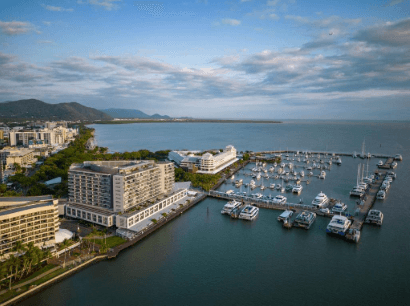
Shoulder Season Opportunities (April & November)
April and November provide 30-40% lower prices with 10-15 meter visibility. April’s temperatures range from 21°C to 28°C. November averages 23°C to 30°C with 180mm rainfall. Both months offer unique opportunities while avoiding peak crowds. 🌤️
April’s transitional weather brings 140mm rainfall. Visibility improves through the month. November sees Irukandji jellyfish activity return. These months combine reasonable weather with reduced costs. Planning visits during these periods requires flexibility but offers significant value. 💰
Understanding Cyclone Season Risks (November to April)
Cyclone season runs November to April with highest risk January–March. Historical data shows 12 major cyclones affected the reef in 30 years. While not annual events, visitors should plan contingencies. Hervey Bay’s calm waters become ideal for June–September whale watching. 🌪️
March 2017’s Cyclone Debbie damaged 50% of Whitsundays reefs. Recovery varies across sites. Therefore, travel insurance becomes necessary during wet season. Most operators offer free rescheduling for weather disruptions. Understanding seasonal risks helps create realistic travel plans. 🌧️
Special Events and Marine Phenomena
November’s coral spawning creates a unique underwater spectacle. Triggered by temperature and moon phases, 160+ coral species release eggs simultaneously. While visibility drops to 5-10 meters, witnessing this natural phenomenon offers a once-in-a-lifetime experience for marine enthusiasts. 🌊
Raine Island hosts 5,734 green turtles nightly during nesting season. Conservation efforts include artificial shade structures to protect eggs from overheating. Hatchlings face 0.1% survival odds. Responsible tourism supports these protection programs through park fees and guided tours. 🐢

Choosing the Right Time for Your Reef Experience
For most visitors, June–September provides optimal conditions. 40% of annual tourism occurs during these months. Plan according to priorities: whale watchers prioritize June–September, budget travelers consider April–May, and turtle fans choose November–February. 🗺️
Visiting between May and October ensures best combination of weather, visibility, and marine life. 93% of reefs showed healthy coral cover during 2023’s dry season. Whether snorkeling or deep diving, timing determines the quality of your reef experience. Start planning early for peak months! 🐠
Ready to dive into the magic of the Great Barrier Reef? 🐠 Aim for June to October’s dry season for crystal-clear waters, minimal stinger risks, and prime marine encounters. 🌊 Whether chasing whale wonders or vibrant corals, timing your visit right turns bucket-list dreams into unforgettable realities—start planning before these peak months fill up!
Q / A About the Great Barrier Reef
When to avoid Great Barrier Reef?
While the Great Barrier Reef is a wonder year-round, you’ll want to be particularly mindful during the « Stinger Season, » which typically runs from November to May. This is when warmer waters attract potentially dangerous jellyfish like the Irukandji and Box Jellyfish. Their stings can be quite serious, so it’s wise to be aware. 🌊
Though direct encounters on the outer reef are rare, as these creatures usually prefer coastal areas, protective stinger suits are widely offered on all cruises during these months. Wearing one is a smart move for swimming and snorkeling, ensuring a much safer and more comfortable dip. For a worry-free experience, the dry season from June to October is your best bet, as it’s largely stinger-free.
Cairns or Port Douglas for Great Barrier Reef?
Choosing between Cairns and Port Douglas for your Great Barrier Reef adventure really boils down to the vibe you’re after. Cairns is the bustling gateway, offering the widest array of dive sites for all skill levels and it’s the sole departure point for multi-day liveaboard trips. If you’re keen on exploring the full spectrum of marine life with plenty of operator choices, Cairns is your spot. 🐠
Port Douglas, on the other hand, provides a more relaxed, boutique experience, often with smaller groups. It offers fantastic access to reefs like Agincourt and uniquely allows you to combine your reef visit with exploring the Daintree Rainforest, where two World Heritage sites meet! It’s perfect if you prefer a charming, walkable town and a more intimate reef encounter. Both locations offer superb diving during the dry season, so you can’t go too wrong! 🌴
How many days for Great Barrier Reef?
How many days you need for the Great Barrier Reef really depends on how deep you want to dive into the experience! For a good first taste, a minimum of one full day from Cairns is essential. This usually allows you to join a full-day excursion that hits a couple of key reef sites, offering opportunities for snorkeling, diving, or even a glass-bottom boat tour. 🛥️
If you’re looking for a more immersive and less rushed adventure, two days offers a fantastic opportunity to explore the reef from different angles, perhaps combining a boat trip with a scenic flight. For the truly dedicated, multi-day liveaboard trips are available, letting you experience night dives and sunrise snorkeling. While you could spend a lifetime here, I’d generally recommend at least three days based in Cairns to truly soak in the reef and its surrounding wonders. 🐢
What months can you swim in the Reef?
You’ll be pleased to know you can swim in the Great Barrier Reef all year round, as the water temperatures are wonderfully pleasant, typically ranging from 24°C in winter to 30°C in summer. However, the optimal period for swimming and snorkeling is generally from May to October. This dry season brings clearer waters with excellent visibility, less rain, and a fantastic abundance of marine life, including whale sightings! 🐳
While swimming is perfectly possible during the wetter months from November to April, just be aware that it’s also the peak stinger season, so protective suits are highly recommended. These warmer months can also offer unique sights like mass coral spawning (typically October/November) and more juvenile marine activity. So, whenever you visit, the water’s usually fine, just pack the right gear! 🤿
